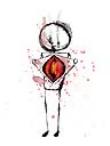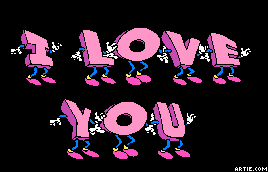PREPARATOR : HAMED MONSEF
Address: http://homepage.mac.com/dondocfrank/SMUG/compactdisc.htm
CD-ROM: Molded Compact Discs
Conventional CD-ROMs, like audio compact discs, are made up of three basic layers. The mass of the disc consists of an injection-molded polycarbonate plastic substrate which includes a spiral track of variable-length pits and lands encoding all the data contained in the disc. Over the substrate is a thin aluminum (or gold in premium products) reflective layer, which in turn is covered by an outer protective lacquer coating.
Information is retrieved by a CD-ROM drive focusing a low-powered (0.5mw) infrared (780nm) laser beam onto the spiral track of pits and lands in the disc"s substrate. The height difference between the pits and the adjacent lands creates a phase shift causing destructive interference in the reflected beam.
CD-R: CD-Recordable
CD-Recordable discs have a different construction and operate under a different principle than molded CD. CD-R discs use a four-layer system consisting of a polycarbonate substrate, a sensitive organic dye layer, a gold or silver alloy reflector, and a protective lacquer overcoat.
Unlike a conventional CD, the substrate of a CD-R disc does not contain a track of pits and lands. Instead, the substrate contains a slightly wobbled spiral pregroove to provide certain information, such as critical tracking, motor control, a focus signal for the recorder to stay on course, time code information, a value for the recommended optimum recording power, and a disc application code.
The most important difference between a CD-R disc and a regular CD is the inclusion of a sensitive dye layer to accept the data to be recorded. Rather than having the data molded into the substrate as pits and lands at the factory, data is written to the CD-R disc on demand in a permanent and irreversible way by a CD recorder which employs a higher power laser that alters the sensitive dye layer in the pregroove to create areas of decreased "reflectivity." Depending upon the dye, some experience a bleaching effect from exposure to the beam while others may create permanent features and some deformation in the underlying substrate.
Instead of employing the physical height change of a molded pit to disperse light, the written marks in the dye mimic the light-scattering effects of molded pits, modulating the intensity of the light beam returned to the photodiode detector, providing a result close enough to a conventional compact disc.
CD-RW: CD-Read/Write or CD-Erasable
Unlike CD-Recordable, CD-RW allows data not only to be written, but rewritten to disc many times over. To
accomplish this, CD-RW media use a six-layer design consisting of a polycarbonate substrate, a lower dielectric layer, a phase-change alloy recording layer, an upper dielectric layer, an aluminum alloy reflector, and a protective lacquer overcoat.
As with CD-R discs, CD-RW media use a polycarbonate substrate into which a spiral pregroove is molded. In
addition to the motor control and other information of a CD-R disc, a CD-RW disc contains information specific to its format, including indicative write power values, recording speed ranges, recommended erase/write power ratios, and other critical data.
The real heart of CD-RW technology that makes erasability possible is the recording layer, consisting of an alloy composed of silver, indium, antimony, and tellurium. This system operates on the principle of changing the phase of the recording material between a highly reflective crystalline state and a low reflective amorphous state. Unlike other phase-change storage implementations available on the market that "burn bright" or write data by creating areas of increased reflectivity on light-scattering background, CD-RW is a "burn dark" system that writes lower reflectivity marks on a reflective surface. This ensures that the resulting track of amorphous marks and crystalline spaces is as optically close as possible to the pattern of pits and lands on a molded CD.
In its deposited state, phase-change material is amorphous, but CD-RW media comes from the factory "pre-initialized" to a crystalline state. To write data to a CD-RW disc, a powerful (8-14mw) 780nm laser beam is focused in the pregroove and the laser energy is absorbed and heats the crystalline phase-change alloy to its melting point (600 degrees Celsius). When it cools, rather than recrystallizing, it revitrifies into the amorphous state to create the phase change. For rewriting the disc, CD-RW is a Direct Overwrite (DOW) system, which means new data is recorded over existing information without first erasing what is already there. To erase/overwrite data, a lower power (4-8mw) laser is focused on the amorphous portions of the recording layer, which raises it to its glass transition temperature (200 degrees Celsius), and it transforms to a crystalline state.
Instead of using the physical height change of a plastic pit to disperse light as occurs with molded CDs, the written amorphous marks in the phase-change imitate the light-scattering effects of molded pits.
Rounding out the erasable disc"s optical stack are two dielectric films, composed of a mixture of silicon, oxygen, zinc, and sulfur. The dielectric layers that surround the recording layer perform four basic functions, as follows:
modifying the optical response of the media to provide fine signal tuning
increasing the efficiency of the laser by keeping the heat produced on the recording layer
acting as a thermal insulator protecting the substrate, pre-grooves, and reflective layers
serving as a mechanical restraint device to limit the mobility of the recording layer material.

address : http://www.cs.uidaho.edu/rzenner/101_week_6-sp.htm
CD-RW
CD–RW (compact disc rewriteable) – can write and then change data on these CD’s. You do need special CD-RW disks and a CD-RW disk drive. The disk drive uses phase changing technology to alter the crystal structure on the disk surface. Altering the crystal structure creates patterns of light and dark spots, similar to pits and lands on a CD-ROM disk. The crystal structure can be changed from light to dark and back again many times, making it possible to record and modify data on the CD-RW.
Should it replace the hard drive? No, while the CD-RW may have the capacity to store large amounts of data like a hard drive, it’s access and storage speed is slow compared to that of a hard drive.
Both CD-R and CD-RW are great for archiving data.
Magnetic Storage
3 Main types: hard disk, floppy disk, and tape.
Store data by magnetizing microscopic particles on the disk or tape surface. The particles retain their magnetic orientation until that orientation is changed, so while fairly permanent, it is changeable and erasable storage
A read-write head mechanism in the disk drive reads and writes the magnetized particles that represent the data.
Magnetic media gradually lose their magnetic charge over time and therefore result in lost data. Life span around 3 years.
Diskettes can be altered by placing a magnet on the disk or running it through a scanner system, ie at the library or airport (if exposed)
Optical Storage
Primary types are CD and DVD.
Store data as microscopic light and dark spots on the disk surface. The dark spots are called pits. The lighter spots are called lands.
Optical storage gets its name because data is read using a laser light. The transition between pits and lands is interpreted as the 1s and 0s that represent data.

The polycarbonate serves as the base of the disc and is physically stamped with the appropiate pits and lands to convey the required information (pre-grooved). A layer of aluminum is added for reflectivity. The lacquer coating is applied as a protectant. In comparison, CD-R discs are more sophisticated and robustly constructed. The layering structure of a Mittsui "Gold" CD-R is diagrammed below:

واکنش قلعه نویی به «مرد دو هزار چهره»؛ لذت بردم اما ...
خودکشی (2) (ویژگیها، عوامل هشدار دهنده و خطرآفرین)
خودکشی (1) (اصطلاحات، افسانهها و واقعیتها)
زنگ جالب موبایل در آبادان و خرمشهر!
با بهرام رادان از ماجراجوییها، دیوانگیها و آرزوهای عجیب و غریبش!
پیش بینی آینده زناشویی با ریاضیات !
نشانی 90سایت مستهجن منهدم شده
انتخاب گرانترین بازیگر هالیوود: بازهم آنجلینا در صدر! (+عکس)
حذف مجسمه مستهجن «باران عشق» از آنتالیا!
یک مرده در امریکا به عنوان شهردار انتخاب شد!!
توقیف آهنگ خواننده زن بخاطر واژه بوسه!! (+عکس)
[عناوین آرشیوشده]
بازدید دیروز: 332
کل بازدید :803515

در مورد خودم زیاد مهم نیست
اموزش . ترفند . مقاله . نرم افزار
آموزش.ترفند.مطالب جالب.جوک
تاسیسات ( فنی و مهندسی )
هرچی دلت می خواد بیاتو
تجارت الکترونیک
نیازمندی ها
اماکن دیدنی و تاریخی تهران
زندگینامه پیامبران و امامان
مقالات ورزشی
زندگینامه مشاهیر ایران
زندگینامه مشاهیر جهان
مقالات در مورد کامپیوتر و فناوری اطلاعات
گیاهان و میوه جات
مقالات جانوران
اماکن دیدنی و تاریخی جهان
مقالات تاریخی
مقالات دینی و اخلاقی
شهرها و کشورها
اختراعات و اکتشافات
پزشکی و سلامت
مقالات پیرامون زندگی و اجتماع
فیلم - موسیقی - نقاشی
داستان
مقالات علمی و پژوهشی
آشپزی
عکس
دانلود فیلم - موسیقی و نرم افزار
معرفی و دانلود کتاب
فنی و مهندسی
بهار 1387



















.jpg)





